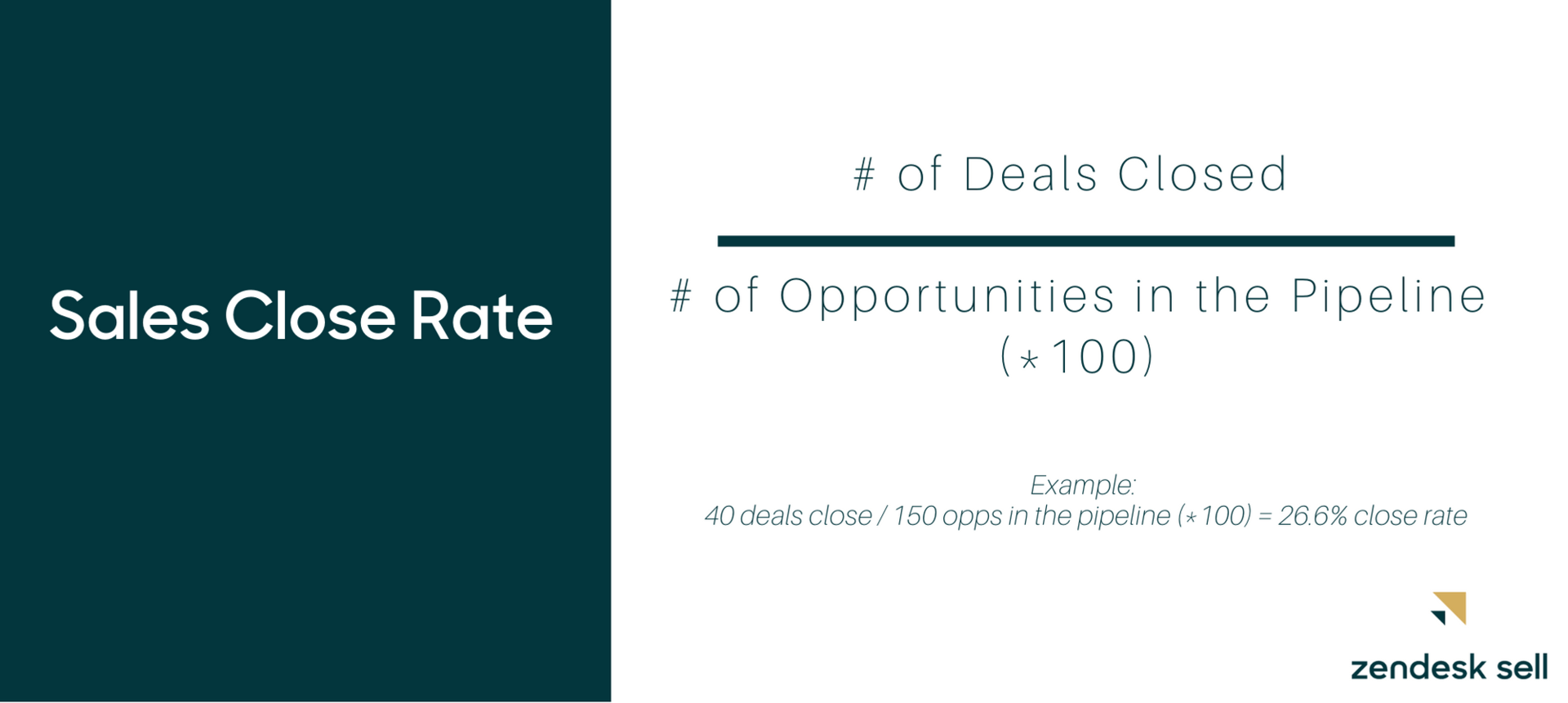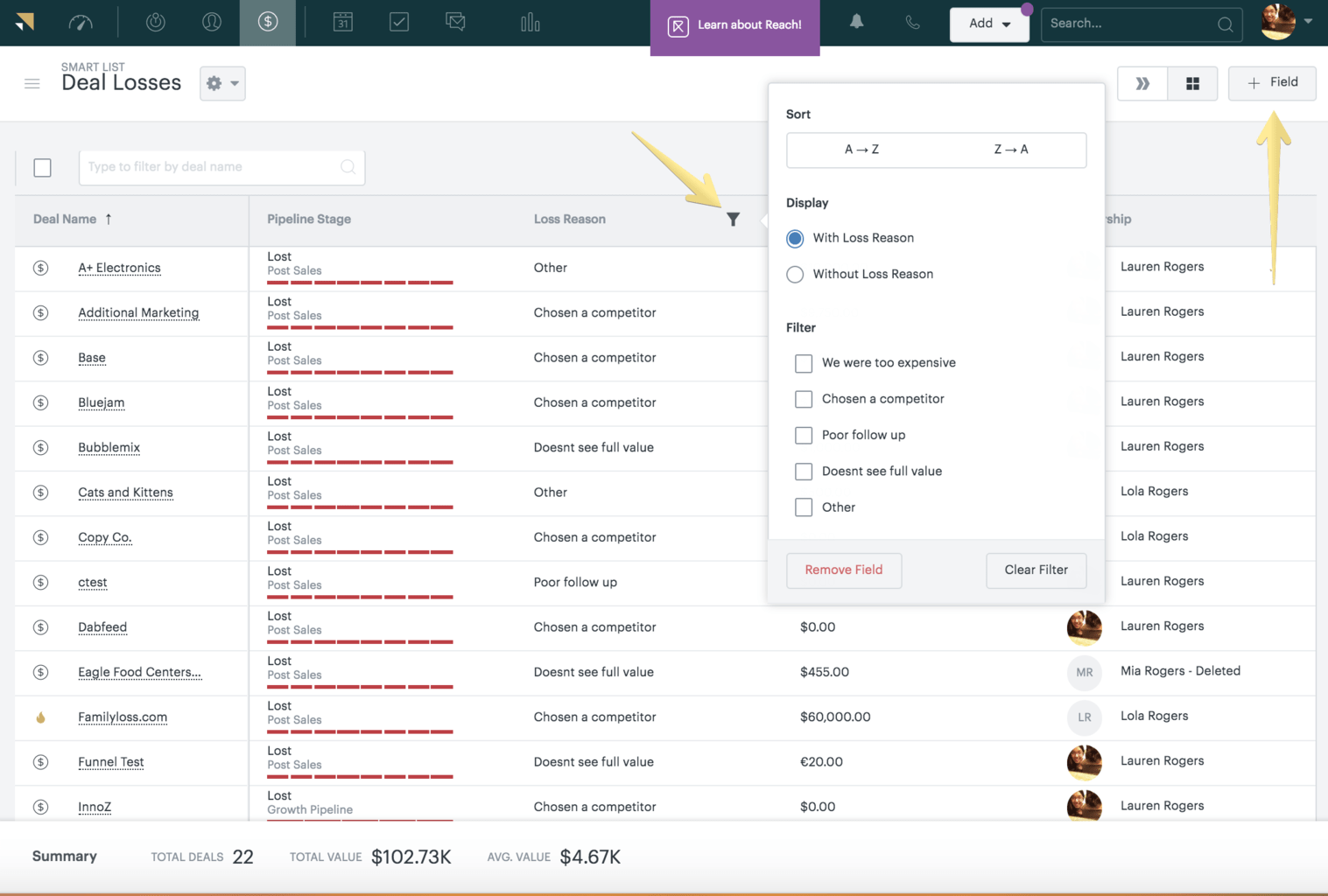As sales reps, we’re all familiar with monthly quota stresses. When it gets down to the wire, you add as many leads as you can to the pipeline to maximize potential deals. And it works! You successfully meet your sales quota. But there’s a new problem—your close rate is appalling.
Why? Because in your frenzy to meet quota, you didn’t pay close enough attention to the quality of the leads entering your pipeline. As a result, many of them were lost to an avoidable reason, such as disqualification, lowering your close rate. Fortunately, there’s an easy solution to both exceeding your quota and improving your close rate. The key is to pay closer attention to the early stages of your sales cycle to identify bottlenecks and inefficiencies hindering your success.
To help you get started, we’ll talk about the four most common factors that hinder close rates and how to eliminate them. But first, let’s break down the basics of close rates.
What is close rate and how is it calculated?
Close rate compares the total number of deals a rep makes to the number of opportunities in their pipeline. Not to be confused with win rate, which calculates how many deals are made from qualified leads, close rate takes into account every potential sale.
To calculate your close rate, add the total amount of deals made in a month and divide that amount by the number of leads in your pipeline during that time. Multiply that number by 100 to calculate your close rate percentage.

Say, for example, there were 150 leads in your pipeline, but only 40 of those leads resulted in a sale. Your close rate would be 26.6%. If you can calculate your close rate, you can monitor its improvement over time. And if you’re struggling to get your numbers up, one of the following four factors may be hindering your progress.
4 factors hindering your close rate
Improving your close rate means taking a closer look at how you’re managing the early stages of your sales cycle. You have to learn how to keep weak opportunities from entering your pipeline. If you aren’t giving due diligence to early-stage processes—research, prospecting, and qualification—you’ll likely waste time on leads who aren’t a fit for your product.
Below are four easily avoidable mistakes that might be hindering your close rate, along with how to remedy them.
1. Skipping pre-selling tactics
Pre-selling tactics are used to identify product-market fit and create demand for new companies or products. Whether you’re rolling out a new feature or releasing a brand-new product, pre-selling tactics help identify the who, where, and why of future sales. If you’ve researched and identified your core audience, you’ll be prepared to find high-quality leads. Without the help of pre-selling tactics, your odds are worse; it’s like searching for a needle in a haystack.
Start by creating target personas. Think about what type of customer stands to benefit the most from your product and why. For example, let’s say you’re selling a timekeeping software that automatically records employees’ activities, eliminating the need for manual data entry. Target persona Sally, head of HR, is tired of nagging employees to update their timesheets and is frustrated with constant data-entry errors.
You’ve identified a key customer base and their potential pain points. And, you know how your product can solve those pain points. With the help of pre-selling research, you’ll be more confident that the prospects you’re targeting are a product-market fit. And by keeping poor-fit leads out of your pipeline, you have a higher chance of converting prospects.
2. Unqualified leads are entering the pipeline
Developing stricter criteria for leads entering your pipeline is a sure-fire way to improve close rate. It doesn’t have to be time-consuming, either.
The first step is figuring out if there’s a common reason why leads are dropping off. Use your CRM to view a “loss reasons” report, such as the one shown below:

Use this report to figure out if your disqualified leads have anything in common. For example, if leads are often lost because they don’t see the full value of your product, you might want to reevaluate your target persona criteria. Knowing why your leads are getting disqualified will make it easier to prevent similar prospects from entering your pipeline in the future.
3. Lack of segmentation
Lead segmentation is a way for reps to organize their prospects into lists based on industry, company size, deal worth, pipeline status, and more.
Using lead lists, reps can send targeted emails to a large pool of similar prospects at once, prioritize leads by deal worth, or track a lead’s movement through the pipeline. This enables reps to complete their daily tasks with more efficiency, allowing them to close deals quicker. And the less time it takes to filter your leads through the entire sales cycle, the higher your close rate will be at the end of the month.
Lead segmentation is easiest with the help of a CRM, which can create customized “smart lists.” If you use Sell, we suggest segmenting leads by:
Industry.
Group leads who work in the same field into a smart list. You can mass email this list when you want to send industry-specific communication. Sell even allows you to create customized email templates for different industries.

Communication status.
Segmenting leads based on communication status helps ensure no leads are missed and no conversations are forgotten. Organize leads by “contacted,” “not contacted,” “needs follow-up,” and so forth to keep outreach and follow-up timely and efficient.

Region.
Regional segmentation is useful if you have leads in different time zones, allowing reps to time their outreach for when their prospects are most likely to be available.

Company size.
Segmenting leads based on company size can help a rep determine the most appropriate way to reach out. For example, a large company with over 500 employees may prefer a cut-and-dry, to-the-point pricing pitch, whereas a startup might prefer a more personal, advocate-like sales approach.
Lead segmentation enables reps to keep outreach customized and targeted without sacrificing productivity or efficiency.
4. Not following up
Research shows that persistence is key when it comes to follow-up. In fact, it can take up to six follow-up emails before reps get a response from a lead. With this in mind, improving your close rate could be as simple as following up more frequently with a sales follow up email.
If the follow-up process is testing your patience, you might be spending more time on it than necessary. An easy solution is to improve the efficiency of your conversation management with a CRM.
For example, you can filter leads to view only those who haven’t responded to your email. You can also filter by date of last conversation, conversation outcome, and more.

Some CRMs also allow reps to record past conversations and their outcomes the minute they take place. With this feature, less time is spent figuring out where conversations were left last, making it easy to construct a relevant and personalized sales follow up email in minutes.
Follow-up doesn’t have to be time-consuming or arduous. All you need is proper conversation and time management, which is a cinch with the right CRM tool.
Improve your close rate by evaluating the early stages of your pipeline
You can improve your close rate by eliminating opportunities from your pipeline that have a low chance of sales success. Use this article as your guide to identifying cracks in the early stages of your sales cycle that might be letting those low-quality leads in and hindering your close rate.
